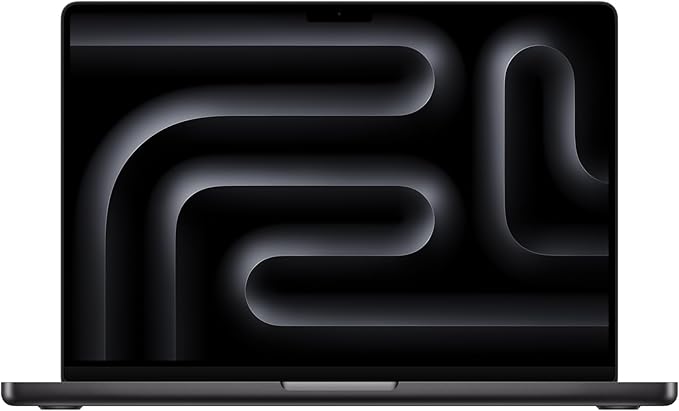When you’re working with ANSYS, the last thing you want is a laptop that lags or freezes right in the middle of a heavy simulation. This kind of software demands serious power under the hood, and not every laptop can handle it well. That’s why choosing the right machine isn’t just about specs on paper—it’s about finding a reliable partner that can keep up with your projects without slowing you down. In this guide, we’ll go over the best laptops for ANSYS in 2025, so you can focus on your engineering work instead of worrying about performance.
Ansys Laptop Requirements
- Operating System: 64-bit Windows 10 or 11 (specific versions may be required for certain Ansys products)
- Processor: Workstation-class Intel or AMD CPU (i7 or comparable recommended)
- RAM: 8GB minimum, 16GB or more recommended (depending on project size)
- Hard Drive: 25GB minimum, SSD preferred for speed
- Graphics Card: Dedicated graphics card with latest drivers and at least 1GB video RAM, supporting OpenGL 4.5 and DirectX 11 (professional workstation class recommended for larger models)
- DirectX: DirectX 11 or higher
Also Read: Best laptops for CFD
Power-Packed Laptops for ANSYS in 2025
- HP Envy 16 Touch-Screen Laptop ($1,339)
- Dell XPS 17 9720 Laptop ($3,799)
- MSI Vector GP77 Laptop ($1,999)
- Acer Nitro 5 Gaming Laptop ( $774)
- Lenovo Slim 7 Touch Laptop ($1,379)
- ASUS VivoBook Pro 16 Laptop ($972)
- GIGABYTE – G6X Gaming Laptop ($2,078)
1. HP Envy 16 (Best laptop for Ansys Mechanical)
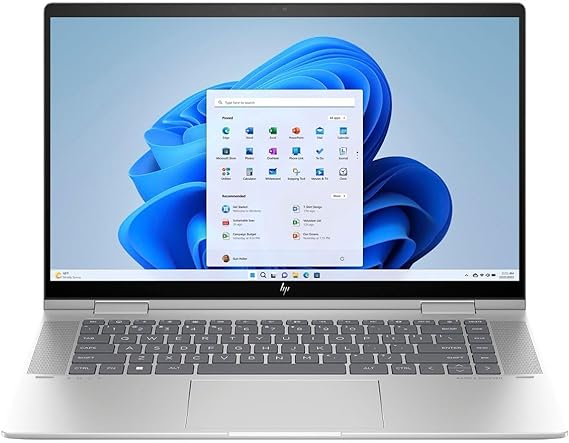
| Screen Size | 16 Inches |
| Hard Disk Size | 1 TB SSD |
| CPU Model | Intel Core i9 |
| Ram Memory Installed Size | 16 GB |
| Operating System | Windows 11 |
| Graphics Card Description | Dedicated NVIDIA GeForce RTX 4060 |
| CPU Speed | 5.4 GHz |
The HP Envy with its impressive features makes it a strong contender for the title of “Best laptop for Ansys.” Here’s why:
- High-Resolution Display: The 16-inch IPS touch screen with a resolution of 2560 × 1600 pixels and a 16:10 aspect ratio ensures a clear and detailed view of complex simulations and models in Ansys. The touch screen functionality can also enhance interaction and navigation within the software.
- Eye Protection: The display’s ability to protect your eyes from harmful blue light is crucial for professionals who spend extended periods working on simulations and analyses. This feature helps reduce eyestrain, promoting a more comfortable and sustainable working environment.
- Powerful Graphics Performance: The NVIDIA GeForce RTX 4060 graphics card is a robust choice for handling the demanding graphics requirements of Ansys. Its capabilities are not only beneficial for gaming but also for accelerating simulations, rendering, and other graphics-intensive tasks inherent to Ansys.
- High-Performance Processor: The 13th Gen Intel Core i9-13900H processor offers exceptional performance and efficiency for multi-tasking, a crucial aspect when dealing with complex simulations in Ansys. The processor’s advancements in real-world computing contribute to smoother and faster simulations.
- Exceptional Audio Quality: The HP Quad Speakers, HP Audio Boost, and Bang & Olufsen tuning provide an exceptionally rich audio experience. While audio may not be the primary consideration for Ansys users, a high-quality audio system can enhance the overall computing experience, making it more enjoyable for various tasks.
- Connectivity Options: The Thunderbolt 4 with USB Type-C ensures versatile connectivity, allowing you to power your device and connect multiple high-resolution displays with a single cable. This is advantageous for professionals who require a multi-monitor setup for improved productivity.
In summary, the HP Envy with its combination of a high-resolution display, powerful graphics, top-tier processor, exceptional audio, and versatile connectivity makes it a well-rounded choice for Ansys users who demand both performance and comfort in their computing experience.
2. Dell XPS 17 9720 (Best laptop for Ansys and Solidworks)
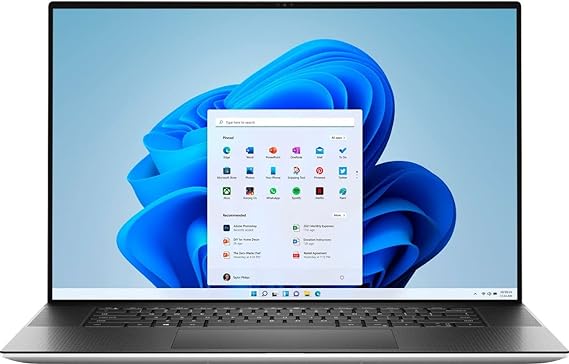
| Model Name | XPS 17 9720 |
| Screen Size | 17 Inches |
| Color | Platinum Silver |
| Hard Disk Size | 4 TB |
| CPU Model | Core i7 Family |
| Ram Memory Installed Size | 64 GB |
| Operating System | Windows 11 Pro |
| Graphics Card Description | NVIDIA RTX 3060 Dedicated |
The Dell XPS 17 9720, with its powerful specifications, is an excellent choice for running Ansys simulations. Here are several reasons why it stands out as one of the best laptops for Ansys:
- Processing Power: The laptop features the 12th Gen Intel Core i7-12700H processor with 14 cores and 20 threads. This powerhouse CPU is capable of handling complex simulations and computations that Ansys requires, providing excellent multi-core performance.
- Memory Capacity and Speed: With a massive 64GB of 4800 MHz DDR5 SDRAM, the laptop ensures ample memory for large-scale simulations. The high memory speed contributes to faster data access and manipulation, crucial for running Ansys simulations efficiently.
- Storage Capacity and Speed: The 4TB NVMe m.2 Solid State Drive not only offers an enormous amount of storage for simulation data but also delivers high-speed data transfer rates. This ensures quick loading times for Ansys simulations and efficient handling of large datasets.
- Graphics Performance: The NVIDIA GeForce RTX 3060 with 6GB GDDR6 VRAM is a capable GPU that supports ray tracing. While Ansys primarily relies on CPU performance, having a powerful GPU can benefit certain simulations and visualization tasks.
- High-Resolution Touchscreen Display: The 17″ UHD+ touchscreen display with a resolution of 3840 x 2400 provides a detailed and immersive visual experience. This can be advantageous when working with complex simulations that involve intricate graphical representations and visualizations.
- Connectivity Options: The laptop comes with Thunderbolt 4 ports, providing high-speed data transfer capabilities. This is useful for connecting external devices, such as high-performance storage or additional monitors, enhancing the overall Ansys workflow.
- Wireless Connectivity: The Intel Killer Wi-Fi 6 card ensures fast and reliable wireless connectivity, which can be beneficial for accessing cloud-based resources or collaborating with colleagues.
- Portability and Build Quality: Despite its powerful internals, the laptop maintains a relatively slim and lightweight profile, making it portable for on-the-go simulations. The CNC machined aluminum build with a carbon fiber or woven glass fiber composite palm rest ensures durability.
- Backlit Keyboard and Fingerprint Reader: The full-size island-style backlit keyboard makes it convenient to work in various environments, and the fingerprint reader adds an extra layer of security.
- Long Battery Life: The 6-cell 86 WHr battery provides decent battery life, allowing users to work on simulations without being tethered to a power source for extended periods.
In summary, the Dell XPS 17 9720 offers a well-rounded package of powerful hardware, high-speed storage and memory, a high-resolution display, and robust connectivity options, making it an excellent choice for professionals working with Ansys simulations.
3. MSI Vector GP77 (Best MSI laptop for Ansys)
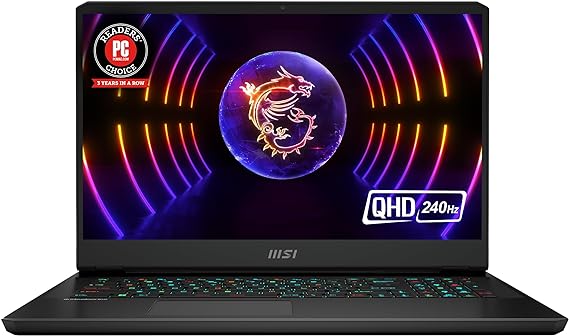
| Model Name | Vector GP77 13VG-096US |
| Screen Size | 17.3 Inches |
| Color | Cosmo Gray |
| Hard Disk Size | 1 TB |
| CPU Model | Core i9 |
| Ram Memory Installed Size | 32 GB |
| Operating System | Windows 11 Pro |
| Graphics Card Description | Dedicated NVIDIA GeForce RTX 4070 |
The MSI Vector GP77 appears to be a strong contender for users looking for a laptop to run Ansys simulations effectively. Here’s a breakdown of its features and how they align with the requirements for Ansys:
- 13th Gen. Intel Core i9 Processor: The powerful Intel Core i9 processor provides the necessary computing power for handling complex simulations in Ansys. Its multi-core architecture ensures efficient parallel processing, which is crucial for simulation software like Ansys.
- Windows 11 Pro: The operating system is a key component for running professional software applications smoothly. Windows 11 Pro, with its enhanced performance and security features, provides a stable environment for Ansys simulations and other high-demanding tasks.
- NVIDIA GeForce RTX 4070 GPU: Ansys benefits significantly from a powerful GPU, and the NVIDIA GeForce RTX 4070 with Ada architecture is well-equipped for this purpose. The GPU’s ray tracing capabilities can enhance the visualization of simulation results, providing a more realistic and detailed representation of complex models.
- QHD Display with 240Hz Refresh Rate: The 17″ QHD display with a fast 240Hz refresh rate ensures a smooth and immersive visual experience. This is particularly beneficial for users working with complex simulations, as a high refresh rate contributes to a more responsive and fluid interaction with the software.
- Vapor Chamber Design: The dedicated vapor chamber cooler on both the CPU and GPU is crucial for maintaining optimal performance during prolonged simulation runs. Ansys simulations can generate significant heat, and a well-designed cooling system helps prevent thermal throttling, ensuring stable and consistent performance over extended periods.
In summary, the MSI Vector GP77 offers a combination of powerful hardware, a high-quality display, and an efficient cooling system, making it a suitable choice for professionals and enthusiasts working with Ansys simulations. The laptop’s specifications align well with the demanding requirements of Ansys software, providing a reliable platform for simulations and other compute-intensive tasks.
4. Acer Nitro 5 (Best laptop for Ansys gaming)
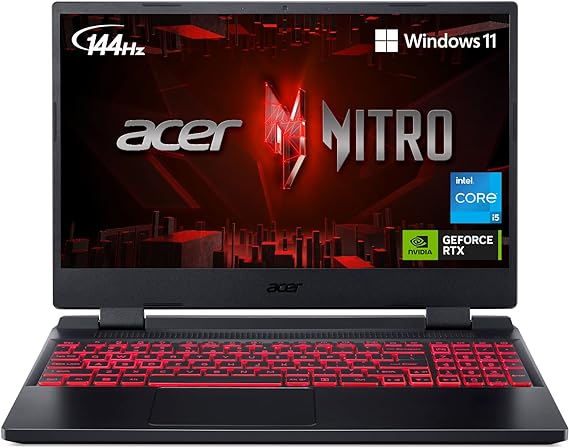
| Model Name | AN515-58-57Y8 |
| Screen Size | 15.6 Inches |
| Color | Black |
| Hard Disk Size | 512 GB |
| CPU Model | Core i5 |
| Ram Memory Installed Size | 16 GB |
| Operating System | Windows 11 Home |
| Special Feature | Backlit Keyboard |
| Graphics Card Description | NVIDIA GeForce RTX 3050 Ti 4GB Dedicated |
The Acer Nitro 5 with its impressive specifications is indeed a commendable choice for running Ansys, a powerful engineering simulation software. Here’s why it stands out:
- 12th Gen Intel Core i5 Processor: The 12th Gen Intel Core i5 processor provides substantial processing power needed for running complex simulations in Ansys. Its performance ensures smooth operation and efficient handling of computational tasks.
- NVIDIA GeForce RTX 3050 Ti Graphics: Ansys often utilizes GPU acceleration for certain computations, and the NVIDIA GeForce RTX 3050 Ti with dedicated GDDR6 VRAM and RTX features provides the necessary graphics power. The Ray Tracing Cores and Tensor Cores enhance visualization and accelerate simulations, contributing to faster analysis and rendering.
- 16GB DDR4 Memory: Ansys simulations can be memory-intensive, and the 16GB DDR4 3200MHz memory ensures ample memory for handling large datasets and complex simulations efficiently.
- 512GB PCIe Gen 4 SSD: The PCIe Gen 4 SSD offers fast data access and storage, crucial for loading and saving large simulation files quickly, thereby improving productivity.
- Killer Connectivity: The Killer Ethernet E2600 and Killer Wi-Fi 6 AX1650 prioritize network traffic, ensuring a stable and lag-free connection, which is essential for cloud-based simulations and collaboration.
- Cooling System: The dual-fan cooling system and quad-exhaust port design help dissipate heat effectively during prolonged simulation sessions, maintaining optimal performance and preventing thermal throttling.
- Ports and Expandability: The variety of ports including USB Type-C, USB 3.2 Gen 2, HDMI 2.1, and Ethernet allow for easy connectivity with external devices and peripherals, facilitating data transfer and multi-monitor setups for enhanced productivity.
- Portability: Despite its powerful hardware, the Acer Nitro 5 remains relatively portable, making it suitable for users who need to carry out simulations on the go.
In conclusion, the Acer Nitro 5 offers a well-rounded combination of processing power, graphics capability, memory, storage, connectivity, and portability, making it a suitable choice for engineers and professionals working with Ansys simulations.
5. Lenovo Slim 7 (Best Lenovo laptop for Ansys)
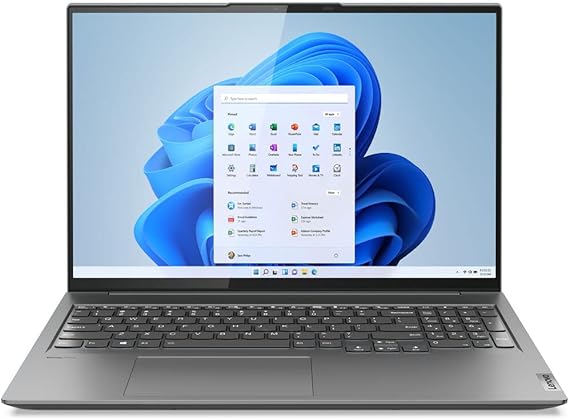
| Model Name | Slim 7 82VB |
| Screen Size | 16 Inches |
| Color | Storm Grey |
| Hard Disk Size | 1 TB |
| CPU Model | Core i7 Family |
| Ram Memory Installed Size | 32 GB |
| Operating System | Windows 11 Pro |
| Special Feature | HD Audio, Backlit Keyboard, Memory Card Slot, Numeric Keypad |
| Graphics Card Description | Intel Arc A370M 4GB Dedicated |
The Lenovo Slim 7, equipped with the specified features, emerges as an excellent choice for running Ansys, a demanding engineering simulation software. Here’s why it stands out as one of the best laptops for Ansys:
- Powerful Processor: The 12th Generation Intel Core i7-12700H processor, boasting 14 cores and 20 threads, provides substantial computational power. Ansys simulations often require significant processing capabilities, and the i7-12700H’s high clock speeds and core count ensure smooth and efficient performance.
- Ample Memory: With 32GB of DDR5 SDRAM clocked at 4800 MHz, the laptop offers abundant memory for handling complex simulations and large datasets efficiently. Ansys simulations can be memory-intensive, and having ample RAM helps prevent performance bottlenecks.
- High-Resolution Display: The 16″ touchscreen LED-backlit 2.5K display with 500 nits brightness and 100% sRGB coverage ensures crisp visuals and accurate color representation. This is crucial for engineers and analysts who rely on visual feedback during simulation runs and analysis.
- Graphics Performance: The Intel Arc A370M 4GB GDDR6 graphics card enhances graphical processing capabilities, facilitating tasks such as rendering and visualization within Ansys simulations.
- Connectivity Options: The laptop’s array of connectivity options, including Thunderbolt 4, USB 3.2 Gen 1, HDMI 2.0, and Wi-Fi 6 AX201, ensure seamless data transfer and connectivity to external devices and networks, which is essential for collaborative work and accessing cloud-based resources.
- Windows 11 Pro: The inclusion of Windows 11 Pro provides a stable and secure operating system environment, ensuring compatibility with Ansys software and other engineering applications commonly used in the industry.
- Portability and Build Quality: Despite its powerful hardware, the Lenovo Slim 7 maintains a sleek and lightweight design, making it highly portable for professionals who need to work on-the-go. Additionally, the full-size backlit keyboard and long-lasting battery further enhance productivity and usability.
Overall, the combination of robust hardware specifications, high-quality display, versatile connectivity options, and portability makes the Lenovo Slim 7 an excellent choice for engineers and analysts working with Ansys simulations.
6. ASUS VivoBook Pro 16 Laptop
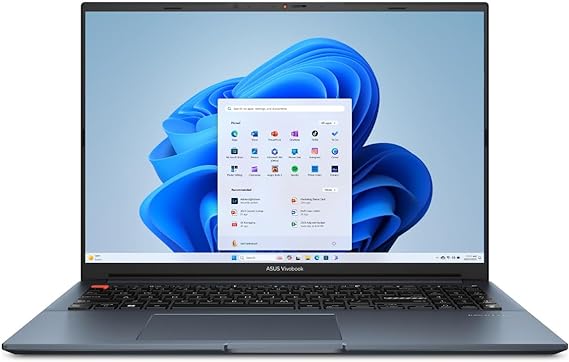
| Model Name | VivoBook Pro 16 |
| Screen Size | 16 Inches |
| Color | Quiet Blue |
| Hard Disk Size | 1 TB |
| CPU Model | Core i9 |
| Ram Memory Installed Size | 16 GB |
| Operating System | Windows 11 Home |
| Special Feature | Fingerprint Reader |
| Graphics Card Description | NVIDIA® GeForce® RTX™ 4060 Dedicated |
The ASUS VivoBook Pro 16 Laptop boasts several features that make it an excellent choice for ANSYS users:
- Powerful Graphics and Processing: With GeForce RTX graphics and NVIDIA Studio Drivers, this laptop ensures smooth rendering and editing experiences, which are essential for running complex simulations and analyses in ANSYS.
- Durability: Meeting the MIL-STD 810G military standard means this laptop is built to withstand tough conditions, ensuring reliability even in demanding work environments where ANSYS simulations may run for extended periods.
- Efficient Cooling System: The ASUS IceCool Plus thermal technology keeps the laptop cool during intense computational tasks, preventing performance throttling and maintaining optimal performance for ANSYS simulations.
- Long Battery Life: The 70WHrs battery allows users to work on ANSYS projects outdoors without worrying about running out of power. Additionally, ASUS Fast Charging Technology ensures quick recharge times, minimizing downtime.
- Generous Screen Size: The 16-inch display provides ample screen real estate for viewing complex simulation results and manipulating models in ANSYS.
- Large Storage Capacity and Fast Speed: The 1TB SSD and up to 16GB RAM ensure fast access to simulation data and smooth operation of ANSYS software.
- Extensive Connectivity Options: Multiple ports, including USB A, USB C, and HDMI, allow for easy connection to peripherals and external displays, enhancing productivity for ANSYS users who may need to connect various devices.
- User-Friendly and Secure: Features such as the fingerprint scanner and laptop camera cover enhance security and privacy, crucial for handling sensitive data often involved in ANSYS simulations.
- Free Creative Software Bundle: The complimentary 3-month Adobe Creative Cloud subscription adds value to the purchase and may be useful for ANSYS users involved in visualizing and presenting simulation results.
Overall, the ASUS VivoBook Pro 16 Laptop offers a combination of power, durability, connectivity, and security features that make it an excellent choice for ANSYS users who require high performance and reliability for their simulations.
7. GIGABYTE – G6X Gaming Laptop

| Model Name | G6X 9KG-43US864SH |
| Screen Size | 16 Inches |
| Color | Black |
| CPU Model | Intel Core i7 |
| Ram Memory Installed Size | 32 GB |
| Operating System | Windows 11 Home AD |
| Graphics Coprocessor | NVIDIA GeForce RTX 4060 |
| CPU Speed | 2.6 GHz |
The GIGABYTE G6X Gaming Laptop is an excellent choice for running Ansys due to its powerful hardware and advanced features tailored for high-performance tasks. Here’s why:
- NVIDIA GeForce RTX 4060 GPU: The NVIDIA GeForce RTX 4060 Laptop GPU with 8GB GDDR6 is ideal for handling the complex simulations and graphics-intensive processes that Ansys demands. This GPU offers ample power for rendering detailed models and running simulations smoothly, making it suitable for engineers and researchers.
- Intel 13th Gen Core i7-13650HX Processor: The 13th Gen Intel Core i7-13650HX Processor, clocked at up to 4.9 GHz, ensures quick processing and efficient handling of Ansys’ multi-threaded workloads. This high-speed processor is designed to manage the extensive computations required by Ansys, ensuring faster solution times and improved productivity.
- DDR5 32GB RAM: With 32GB of DDR5 4800 RAM, the laptop provides significant memory bandwidth, which is essential for running large simulations and complex models in Ansys. The ample memory ensures smooth multitasking and efficient handling of large datasets, minimizing lag or slowdowns during analysis.
- 1TB Gen4 M.2 SSD: The 1TB Gen4 M.2 SSD offers fast data access speeds, reducing loading times and improving overall performance. This storage capacity is crucial for storing large simulation files, project data, and Ansys software without running into space constraints.
- 16.0″ WUXGA 165Hz Display: The 16.0″ WUXGA (1920×1200) display with a 165Hz refresh rate provides a clear, detailed view of simulations and models. The higher refresh rate also helps in reducing screen tearing and providing a smoother visual experience when working with dynamic simulations in Ansys.
- Advanced Connectivity: The laptop’s support for Intel Wi-Fi 6E and Bluetooth V5.2 ensures fast, stable internet connectivity and peripheral support, which is beneficial when working in collaborative environments or accessing cloud-based resources for simulations.
In summary, the GIGABYTE G6X Gaming Laptop’s combination of a powerful GPU, high-performance processor, ample RAM, fast storage, and a high-quality display makes it an excellent choice for engineers and professionals using Ansys. It provides the necessary computational power and efficiency to handle the demanding requirements of this advanced engineering software.
Conclusion
So, there you have it—finding the right laptop for ANSYS in 2025 really comes down to balancing power, reliability, and your budget. Whether you’re running heavy simulations for work or learning the ropes as a student, the right machine can make the process smoother and less stressful. Pick the one that fits your needs, and you’ll be set to focus on the engineering—not the hardware.
Also Read: Best Laptops for Siemens NX
FAQs
Think CPU first (high single-core speed + multiple cores), lots of RAM (start at 32GB), a fast NVMe SSD, and a capable GPU if you use CFD or GPU-accelerated solvers. Good cooling and upgradability matter more than flashy extras.
Yes — many gaming laptops have the raw CPU/GPU power needed. The tradeoff is thermals and driver support. If you’ll run big, long simulations, a workstation laptop or a desktop workstation is often more reliable.
For small models 16–32GB can work, but 32GB is a safer baseline. For medium to large assemblies or heavy CFD, aim for 64–128GB. More RAM prevents swapping and keeps simulations snappy.
ANSYS primarily targets Windows and Linux. Macs need a Windows environment (Boot Camp on older Intel Macs, or virtualization), which can be awkward for heavy simulations. For hassle-free work, a Windows/Linux machine is easier.

